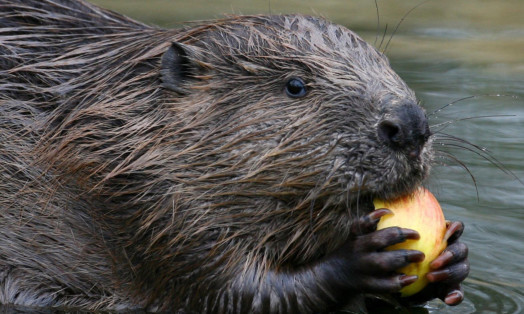Salmon experts have condemned the possible reintroduction of beavers to Courier Country’s prime sporting rivers as a risk that is “simply too great”.
Ahead of a Scottish Government decision later this year over the controversial proposal to bring back the large rodent, experts have said the animals could bring benefits for Scotland’s rivers in terms of habitat engineering and watercourse ecology.
But the same report has sounded clear warning bells over the impact of beaver dams on salmon attempting to reach the valuable spawning grounds of the Tay and North Esk.
Sporting interests said the reappearance of beavers on those rivers would be an “ill-advised additional pressure on our fragile salmon runs” and have called for the plan to be rejected.
A number of studies have been carried out into the subject, including the five-year Scottish beaver trial in Knapdale, Argyll.
Beavers have been extinct in Scotland since the 17th Century, although they appear in small numbers in many parts of the country, including Perthshire and Angus, it is thought after escaping from private collections.
“Atlantic salmon evolved with beavers over millennia and clearly the two species co-occurred in Scotland,” the Marine Scotland Science report said.
“There is little doubt that beavers can generally have overall positive effects on production of some species of salmonid fishes due to their role in engineering river habitats and influencing the chemical dynamics within the watercourse.
“However, their influence on Atlantic salmon is more ambiguous because this species of fish is specialised for swift waters, which would be reduced by extensive beaver damming.
“Furthermore, Atlantic salmon is highly migratory and hence vulnerable to obstruction of free passage.
“It is, therefore, by no means certain that salmon across their range can tolerate negative effects of beavers in the way that once they could.
“It is likely that beavers would need to be managed to avoid negative effects.”
Sporting interests have told The Courier the risk to salmon is too high a price to pay for the reintroduction of beavers.
Andrew Graham-Stewart, director of the Salmon and Trout Association (Scotland), said: “The MSS report makes it clear that, while salmon and beavers co-existed in Scotland in the past, the situation today bears no comparison.
“Salmon numbers are greatly depleted and the species currently faces numerous pressures.
“The negative impacts associated with beavers, particularly in preventing upstream migration, would be an ill-advised additional pressure on our fragile salmon runs.
“In the circumstances, we believe that the precautionary principle should prevail and proposals to allow beavers to become established in Scotland should be rejected.
“The potential risks for salmon populations are simply too great.”
A spokesman for the Esk District Salmon Fishery Board said: “We concur with all the potential negative effects of beavers on salmon numbers, as detailed in the MSS report.
“We remain firmly opposed to the introduction of beavers in our area, not least because of the very extensive overlap between potential beaver habitat and existing salmon habitat.”
